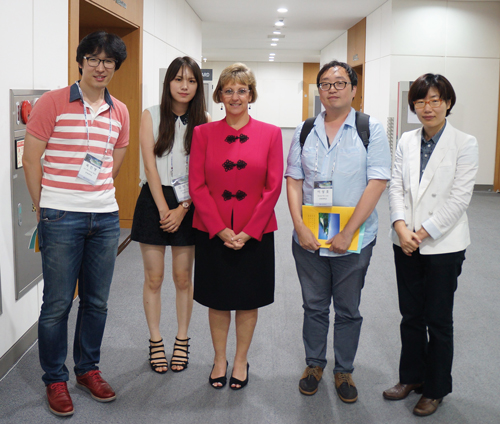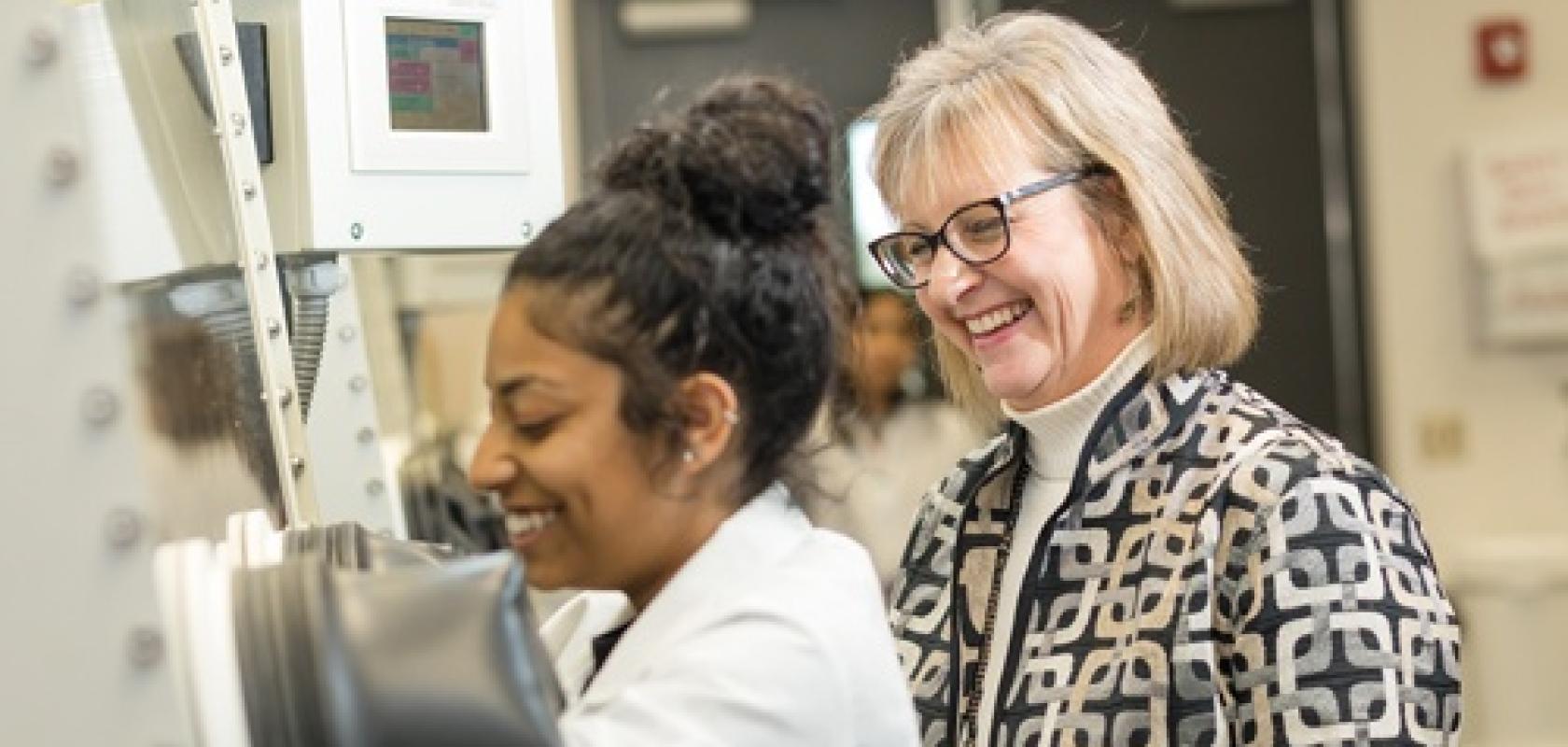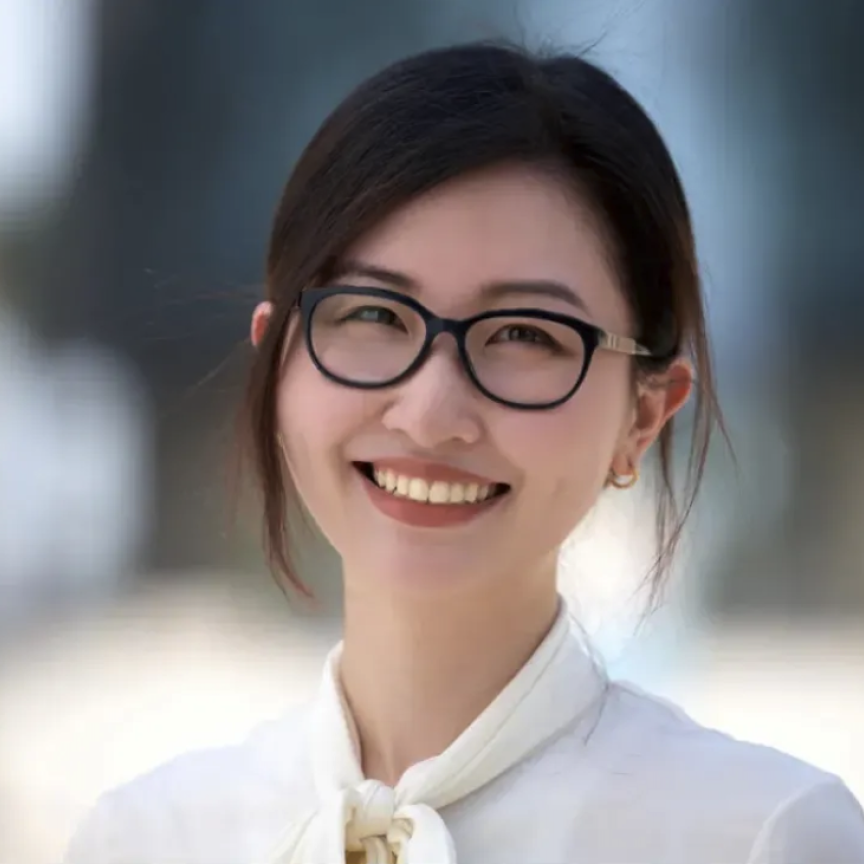Kathleen Richardson, Pegasus Professor at the University of Central Florida, discusses her career developing next-gen materials and her mentorship roles within this
What is your favorite aspect of working with optical materials?
It’s a ‘chemistry thing’ blended with a ‘people thing.’ What makes optical materials science so exciting is that the needs of any new optical system rely on the materials that make up its core. You can go to a database and check the attributes of existing materials, but all-too-frequently for cutting-edge, next-generation systems, the non-existent material ‘unobtainium’ is the only one that fits the bill.
Designers default to what they know, trying to engineer around the limitation. This is often costly and results in bulky optical systems.
Just because you can make it in a lab, doesn’t mean you can get the same properties upon scale-up to a form that can be cut, ground and polished into an optical component
Getting a new material into a database takes innovation and investment: it entails carrying a new material’s discovery all the way through to part-prototyping. Many material providers no longer have the capabilities to do the R&D required, so, in the past decade, end-users have come to us, providing an exciting opportunity for our team. For students and researchers to be part of that development is what makes optical materials thrilling and satisfying – it’s the best way to apply basic chemistry and physics book-training to something tangible and marketable. Hence, the chemistry and people blend.
Being in the field of infrared optical materials, there are many opportunities to make new or remake old materials that folks haven’t looked at in years, that perhaps were too difficult to make, grow or melt, based on cost and available technology. The fun is in understanding what the system and design folks need, and then applying our experience in compositional design and process engineering and characterisation, to propose a manufacturable alternative. That manufacturability is critical: just because you can make it in a lab, doesn’t mean you can get the same properties upon scale-up to a form that can be cut, ground and polished into an optical component. Understanding the full extremes of the component’s value chain – processing, fabrication, environmental stability, metrology, assembly and ultimate-use environment, while meeting stringent performance specs – makes us, in my opinion, one of the most important cogs in the machine that makes the optical system run – and run reliably.
When deciding on research directions, are you interested in the applications as much as the fundamentals?
Well, to do a good job on the fundamentals, you really need to understand the applications. This is where partnerships with others who understand the performance needs and metrics allow us to engineer a better material solution. This is how our work gets transitioned out of our lab and into industry and government systems.
There is less and less funding to do the fundamentals, so it’s usually the applied-research funding that pays the bills, that allow us to work using the fundamentals. Despite these funds usually coming from industry or government, with good partners you can distill out the basic science needed for the student’s dissertation and publications, and do it in a way that protects any proprietary aspects of the work.
Are there recent collaborative projects that you are particularly proud of?
Two come to mind. Our group has been fortunate to be able to do cool things that have given us great visibility. Our highly cited publications in unique, multi-functional, and broadband optical glasses and optical composites – glass ceramics and phase change media – are the most technically satisfying things we’ve been able to push forward over the past decade.
The glass ceramic project has transitioned to a novel glass developed in our laboratory for Broadband GRIN applications – starting off as small, 40g test melts – through scale up with an industrial glass manufacturer. This material is undergoing final certification for system use.
Through the work of a dedicated industrial research partner – a former student – who could sell the potential for this to her management, this project resulted in seven years of funding to our team, multiple joint patents, and materials introduced to the market, something we’re especially proud of.
The special issue of the International Journal for Advanced Glass Science on Women in Glass is another example. Working with my colleague Professor Alicia Duran, of CSIC in Spain, and the American Ceramic Society, this issue allowed us to match senior and junior researchers, mostly, but not exclusively, women, to write co-authored articles on state-of-the-art aspects of research in glass science and engineering.
The project encouraged networking, as well a chance for authors to elevate their work well beyond individual research environments.
You are recognised as an educator and mentor. What do you enjoy most about supporting others?
Mentorship is agnostic of research discipline, in that it relies on a partnership that includes textbook know-how but is also an alignment of values between the mentor and mentee. We teach the book-smart stuff – research 101 – as well as the skills that nurture critical thinkers who are motivated, engaged and share their successes beyond themselves, creating strong collaborations built on mutual respect of disciplines and expertise. This is what gives me joy.

Richardson with members of Yonsei University's Optical Society of Korea chapter in 2015
The diversity issue remains a significant challenge in our field and beyond. Motivating young women scientists to progress into academia, industry or government labs is the only way there will be more women in optics. As the adviser for CREOL’s Women in Lasers and Optics organisation, I see that many of our international students return to their home countries and have a hard time finding work environments that permit them to be strong, confident and technically competent scientists, allowing their voices to extend to their next generation of students. Striking this balance in an inclusive space, that blends viewpoints and gender, is what we work towards because it makes for better work environments.
What are the most progressive changes for women in optics?
Progress in this area, as data shows, is still slow. But our professional societies are now doing a better job of being inclusive, not just with committee assignments but with overdue award recognition for important technical contributions.
While I’ve not had women mentors throughout my career, I’ve had outstanding leaders in diverse fields who have mentored me, not seeing my gender but my ability to contribute to their team and my interest in learning about our material’s potential. That has had a huge impact on my views on professional-development philosophy, and anchors my commitment to supporting women in science.
___
Kathleen Richardson, Pegasus Professor of optics, materials science and engineering at CREOL, the College of Optics and Photonics at the University of Central Florida, leads the institution’s Glass Processing and Characterisation Laboratory


